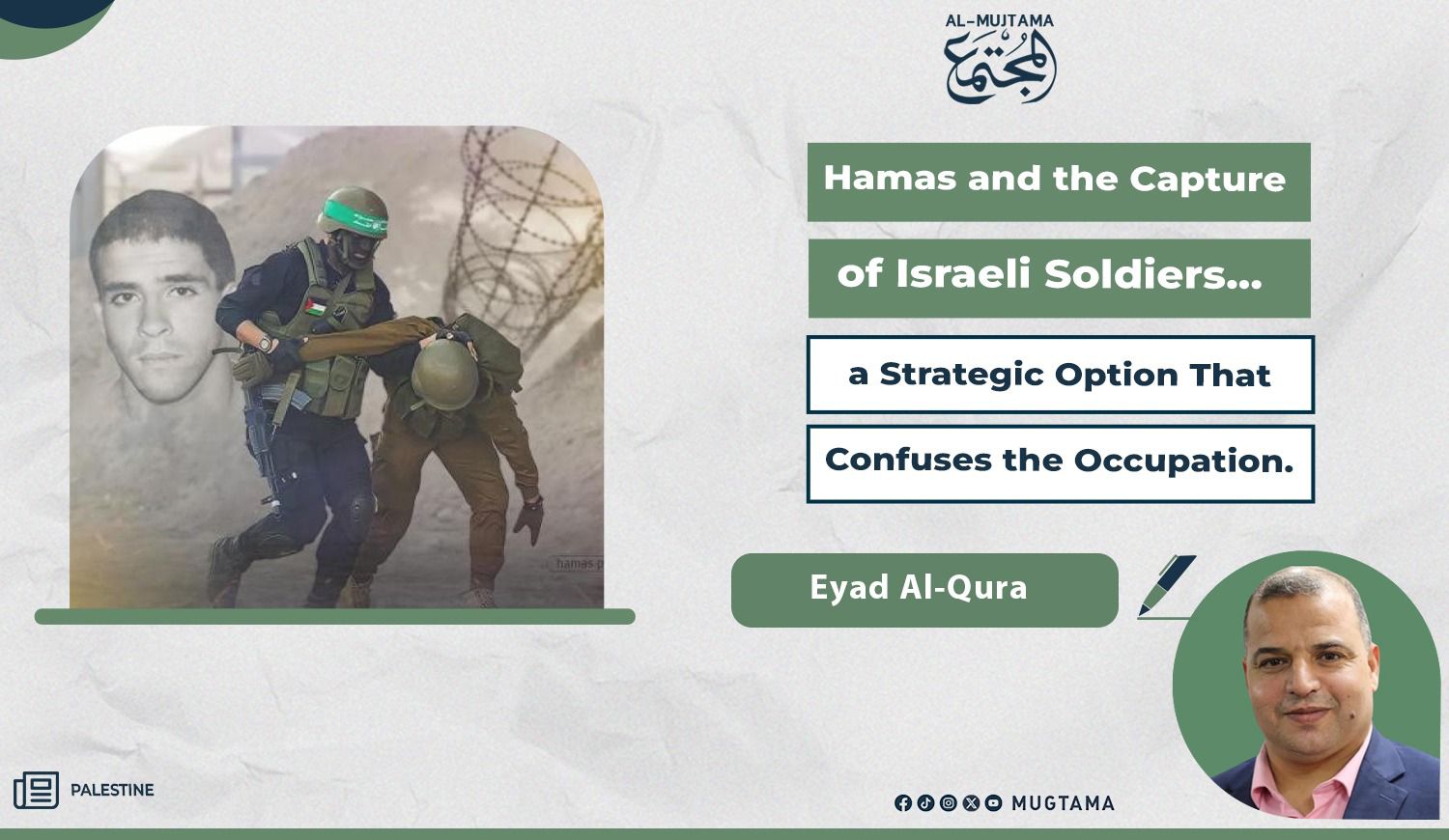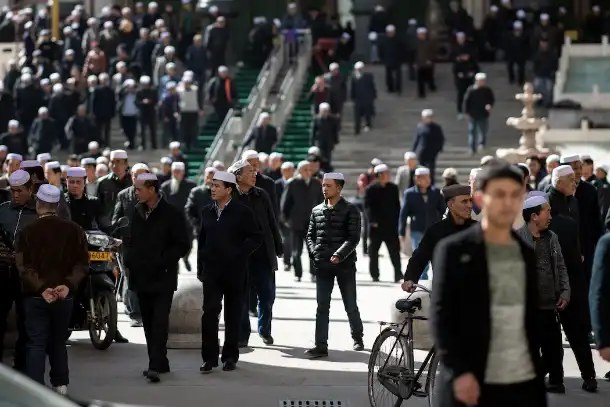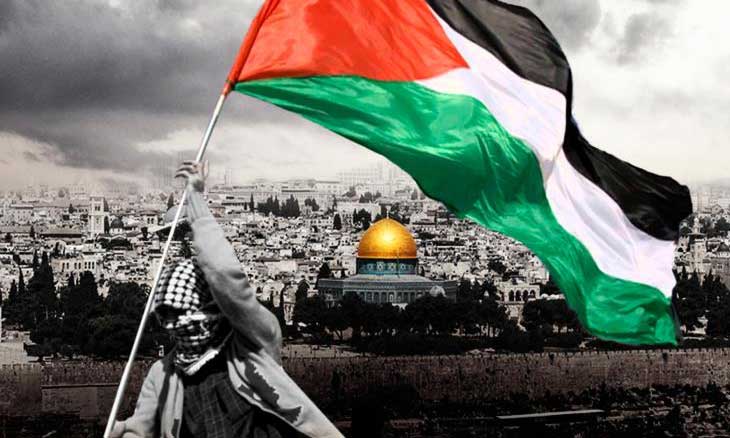Hamas and the Capture of Israeli Soldiers… a Strategic Option That Confuses the Occupation.

In
the context of the ongoing escalation in Gaza, and with the increasing field
operations of the Palestinian resistance, an important
strategic option has surfaced in the political and military circles of the
Zionist entity: the possibility that Hamas may resort to capturing Israeli
soldiers during clashes or through special operations behind enemy lines.
This option
which now seems more likely than ever
is not a limited tactical move, but rather a strategic direction with dimensions
that extend beyond the battlefield to reach into the heart of Israeli society
and its political balances.
Over the years the resistance has accumulated significant experience in this
domain. Some of its attempts succeeded and led to exchange deals, as happened
in the case of soldier Gilad Shalit, while others are still ongoing since
October 7, during which the resistance captured more than 250 prisoners 48 of
whom remain in the resistance’s hands. These are the soldiers taken from their
tank and military positions. In past deals the resistance released settlers,
female conscripts, reservists, and ill soldiers. With the Israeli army failing
to achieve a decisive outcome after more than 700 days of aggression against
Gaza, the option of capturing soldiers becomes a ready card on the table,
giving the resistance additional leverage and deepening the occupation’s
predicament.
Why the Option of Capturing Soldiers Now?
The decision to move toward
this option stems from several considerations: First, the resistance
understands that any capture operation constitutes a direct blow to the
prestige of the Israeli army, which presents itself as capable of full control
over Gaza.
Second: Capturing soldiers opens the door to
new negotiations for exchange deals, which restores hope to thousands of
Palestinian prisoners in the occupation’s jails.
Third: Such operations leave a profound psychological impact within Israeli
society, as the fate of the soldiers becomes a public opinion issue that
pressures both the government and the army.
There are also considerations related to the internal balance within the
Zionist entity, as the army and the government are experiencing clear
disagreements over the management of operations in Gaza, while the opposition
exploits these gaps to direct criticism.
In such a climate, any
success by the resistance in capturing soldiers would have a doubled impact, as
it opens a new front of accusations and tensions within the Israeli
establishment itself.
The Anticipated Impact of Captive-Taking Operations on Israel’s
Army and Society
The Israeli army always places the issue of
missing or captured soldiers at the top of its priorities, not only for
humanitarian reasons, but because the matter touches on society’s trust in the
army. Any capture operation means that Israeli forces are unable to protect
themselves, which undermines the morale of soldiers in the field and makes
service in Gaza a constant source of concern.
As for Israeli society, it views this issue
with exceptional sensitivity; in the past, the case of a single soldier turned
into a political crisis that shook the government and forced it into difficult
negotiations. Accordingly, the capture of more than one soldier by the
resistance would create an unprecedented state of internal pressure, weakening
the government and intensifying divisions within Israel.
Previous Experiences and Attempts to Capture Occupation Soldiers
The resistance has not recently introduced
this option; there is a long record of attempts that confirm the seriousness of
this approach. For example, the resistance attempted to carry out a qualitative
operation that was not completed but proved its ability to penetrate the army’s
system. In Khan Younis, an attempt was made to target Israeli truck drivers,
with the aim not only of direct capture but also of testing the army’s ability
to respond to such operations. In the Al-Zaytoun neighborhood, similar
operations emerged, focused on inflicting direct losses on the army, while at
the same time reflecting the resistance’s constant search for opportunities to
seize soldiers alive.
These attempts, despite the obstacles they
faced, formed a cumulative experience that reinforced the resistance’s
confidence in its ability to achieve greater success in the future, and, most
importantly, they exposed gaps in the Israeli military apparatus that can be
built upon in subsequent operations
Possible Scenarios
for the Option of Capturing (Soldiers)
By
reading the field and political situation, three main scenarios can be
envisaged for how the resistance will deal with the option of capturing
First: limited capture — the resistance succeeds in capturing one or two
soldiers through a swift operation.
This scenario has a wide psychological and media impact, but it remains limited
unless it is used as a negotiating card.
Second: Negotiatory capture — where the resistance holds soldiers in its
custody and begins to use them as a tool of pressure to secure a broad exchange
deal. Here, the issue turns into a major political crisis inside Israel, and
the government is forced to make concessions
Third: collective capture — the most dangerous scenario, in which the
resistance seeks to capture a group of soldiers at once through an organized
attack on a military site. This was seen in the recent assault by an entire
unit of the Qassam Brigades on an Israeli army command post east of Khan Younis
a few weeks ago, where attempts were made to capture soldiers. The operation
ended with the martyrdom of some resistance fighters and the killing and
wounding of several Israeli soldiers, and the occupation considered it a major
breach in its ranks that nearly succeeded in capturing a number of soldiers.
This scenario would constitute a strategic shock to the
Israeli army and trigger a political earthquake in Tel Aviv, and it might
redraw the rules of the conflict entirely."
Political and Strategic Repercussions on the Occupation
The resistance’s success in
any of these scenarios would lead to far-reaching strategic consequences.
At the political level, divisions between the government, the army, and the
opposition will deepen, weakening Israel’s ability to formulate a unified
policy toward Gaza.
At the international level, the image of the resistance as an organized force
capable of imposing its conditions will be strengthened, while the image of
Israel engaged in a long war with no tangible results
will decline.
Challenges Facing the Resistance
Despite the validity of this option,
its implementation is not easy. The occupation possesses advanced intelligence
capabilities and uses technology to monitor all movements inside Gaza; any
attempt to capture would carry great risks for the fighters carrying it out and
could be met with fierce Israeli military operations.
Moreover, holding and managing captives in a complex environment like Gaza
requires high-level security and logistical arrangements. Nevertheless, the
resistance, having experience in this path before, is aware of these challenges
and works to overcome them through various means.
Captivity as a Tool to Change the Rules
of the Game in the Conflict with Israel
The option of capturing Israeli soldiers today represents an extremely
important strategic card in the hands of the Palestinian resistance; it strikes
at the heart of the Israeli equation and reveals the fragility of the army,
society, and politics all at once. Past experiences have proven that the
resistance has the capability and the will to pursue this path, and the
possible scenarios indicate that any success on this front would radically
change the rules of the game.
Israel entered Gaza convinced it could deliver a decisive victory and bring the
Strip under control. But any abduction would underscore its failure to meet
those goals, highlighting its entanglement in a complex quagmire with no clear
way out.
For the resistance, this option opens the door wide to a new stage of the
conflict, in which the occupation is placed on the defensive, while the
resistance holds the cards of power and pressure that make it more influential
over the course of events at the internal, regional, and international levels.
-------------------------------------------------------------------------











